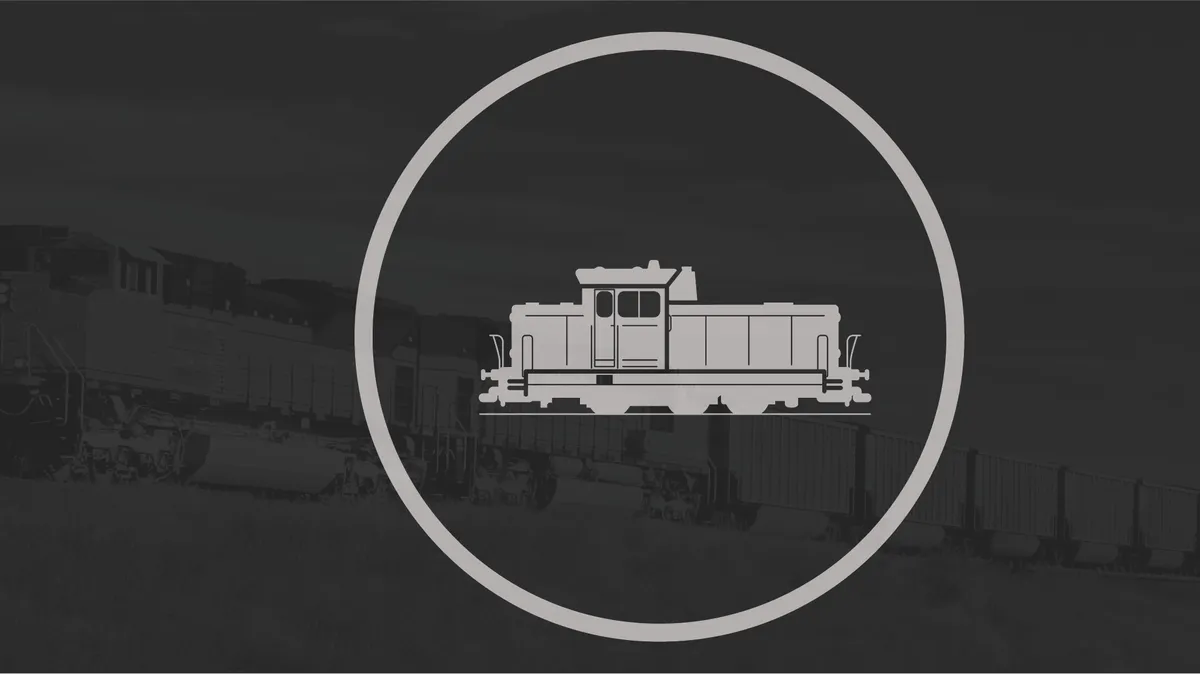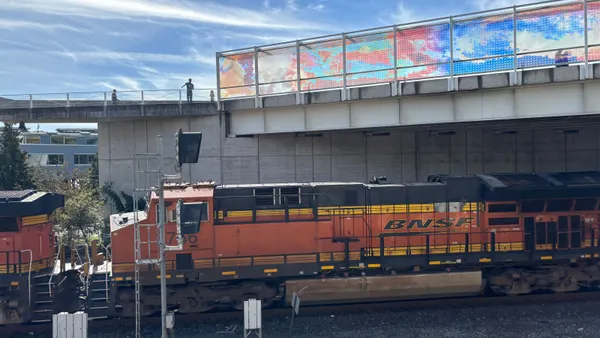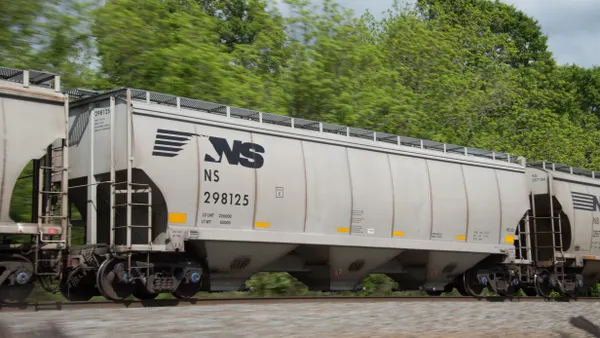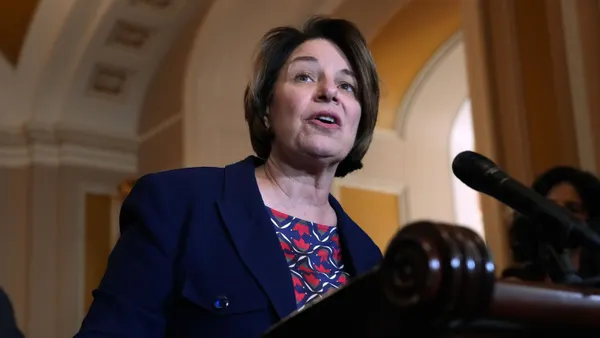Dive Brief:
- U.S. railroads originated 1.1 million carloads in December, a nearly 4% YoY decline, and more than 1.3 million intermodal containers, an increase of more than 12% YoY, according to the latest numbers from the Association of American Railroads. Railroad executives are highlighting railroad efforts to improve intermodal trip plan compliance as the segment's volume has grown in recent months.
- "By the end of the year, rail traffic was close to pre-pandemic levels, sparked by sharply higher grain and intermodal shipments along with the reopening of auto assembly plants," AAR Senior Vice President John T. Gray said in a statement.
- Total carload traffic was down almost 13% YoY in 2020, and intermodal volume fell nearly 2% YoY.
Dive Insight:
Railroads benefited in the back half of 2020, as imports surged and retailers restocked shelves. Volume for traditional commodities, such as coal, slumped on the rail lines in 2020, but intermodal grew, thanks to a tight trucking market and a glut of containers needing to be moved.
In separate earnings calls last week, executives from CSX, Kansas City Southern and Union Pacific spoke optimistically about the companies' futures in the intermodal space.
"You saw the intermodal business, obviously, having the strongest growth," CSX CFO Kevin Boone said, after noting that the segment is traditionally considered the railroad's "least-profitable segment."
As railroads see an opportunity to focus on intermodal volume, they're highlighting efforts to improve the segment's trip plan compliance and adjust their network of intermodal ramps. If intermodal is going to compete with trucks, trip plan compliance will be an important variable.
"In the face of intermodal volume growth of 12% [YoY], we maintain a high level of service as evidenced by our intermodal trip plan compliance results," Union Pacific Executive Vice President of Operations Eric Gehringer said on the company's earnings call last week. "To achieve higher levels, we are working with customers to improve the timely pickup of containers in order to improve box turns, increase parking capacity and create chassis supply."
Union Pacific reported 83% trip plan compliance for intermodal in Q4, which is a one-point drop YoY.
"We are not satisfied with our [key performance indicators]," Union Pacific CEO Lance Fritz said, adding that the company thinks "there's some upside in terms of improvement."
CSX's intermodal trip plan compliance fell 11 percentage points YoY to reach 84%, which it blamed on higher levels of volume from UPS than it was expecting. This resulted in some international traffic taking "a little longer to get off the port than we normally would to make sure we move the time sensitive traffic," CSX CEO Jim Foote said.
CSX's compliance figures are already starting to improve now that UPS' peak season is over, Foote said.
Kansas City Southern's compliance figure was reported as "low 70s in the U.S. and in Mexico."
"We ... need to make a lot more progress there," Kansas City Southern CEO Pat Ottensmeyer said.















